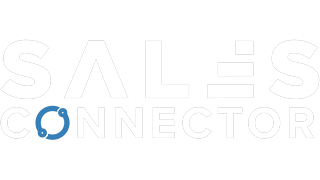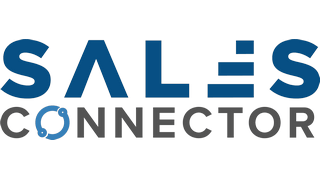Choosing the right digital tools for your business can boost workplace productivity.
With 89% of companies putting digital-first strategies into play, the power of technology is hard to ignore. As a business leader, it’s critical to be aware of the digital tools on the market, as well as how each one can transform your operations and results.
In this guide, we’ll show you how to build a tech stack that propels you forward in your industry instead of keeping you stuck in the past.
What is a tech stack?
A tech stack is the set of digital tools that an organization uses to fulfill their daily tasks as well as their long-term goals. It encompasses all of the software, web applications, and other tools that are core parts of how you operate.
The term “tech stack” most commonly refers to the combination of programming languages, software products, web servers, operating systems, and other tools used by software-as-a-service (SaaS) and development teams.
However, as more and more brands move their operations onto their computers and mobile devices, tech stacks are no longer exclusive to the app, web, or software development process.
Today, technology stacks are also used for a variety of reasons, from digital marketing and sales to human resources and analytics. Instead of helping just one arm of your business succeed, you can build a tech stack (or multiple tech stacks) that encourage the growth of your entire organization.
Why businesses need tech stacks
Whether you run a startup that’s working toward a minimum viable product or a large corporation that’s seeking greater productivity, you can benefit from curating the right set of tools for your team.
Your technology stack is the digital structure behind your business or, in some cases, specific departments of your business. It defines how the different parts of your organization fit together and interact. By doing so, it creates a map for your team members to follow so they can create ideal outcomes for your business faster.
The most successful tech stacks can streamline all of your processes and help your team increase efficiency. As a result, you may notice improvements in your bottom line soon after implementation.
Beyond its day-to-day operational purpose, your tech stack can also help you solve problems when you hit any bumps in the road. With the right tools, you’ll be able to adapt and bounce back quickly, no matter what you confront.
Building the right tech stack
As a whole, your tech stack can be a significant investment for your business. Creating one that you’re fully confident in can help you avoid costly changes and wasted time. Below are four tips to help you build the most effective tech stack possible.
1. Prioritize a strategy
It can be tempting to put your money toward any tool that sounds like a great idea, but before you do so, you must figure out the purpose behind your investments.
With your overarching business strategy in mind, think about what you need to operate, as well as what’s necessary to reach your long-term goals. This is the first step to creating a tech stack that’s perfectly suited to your company and helps you operate like no other.
Many businesses will find it helpful to think about what they want their customers to experience before developing a tech stack. For example, when building a mobile application, an app development team may identify critical components for the front-end or client-side, before they create the building blocks with a tech stack on the backend or the server-side. This will ensure that you’re focusing on the user experience from the get-go, which can lead to greater customer satisfaction in the long run.
Also, be sure to set a budget as part of your strategy to avoid getting overzealous with purchases.
2. Do your research
Before committing to a specific tech stack, weigh your options. Don’t just settle for the cheapest tools or the most popular, cutting-edge options. Select the tools that bring the highest value to your business and help you streamline your processes. After all, you don’t want to force your team constantly switching between apps.
You may want to consider your company’s industry and niche, then find digital tools that directly cater to it. Some business tools will allow you to get a free trial, while some may be open-source and accessible to anyone.
If you need to include more technical elements in your stack, consulting with a skilled member of your team or a third-party expert can help you identify the best options. For example, a software engineer will be able to break down the pros and cons of programming languages like JavaScript versus Python, or a style sheet language like CSS versus a markup language like HTML.
3. Consider your users
Your team members will be the ones using your tech stack daily. As such, it’s crucial to consider their needs when selecting the tools they’ll be using.
One of the most critical questions to ask yourself is how tech-savvy your team members actually are. This will help you determine the level of training required for any given tool.
If you don’t have an in-house IT team, asking yourself this question will also help you identify whether or not you have employees who can help solve problems during and after the implementation stage. If not, you’ll want to find tools that are simple to navigate or even come with quick customer support services.
You’ll also want to consider how easy it’ll be to shift from your current tools to the new tech stack. When implementing any organizational change or digital transformation, businesses experience failure 70% of the time, often due to resistance from team members.
To prevent this failure, consider if your desired tech stack presents a natural shift, if it will affect your current culture in any way, and how you can best present it to your team as a positive change.
4. Seek adaptability
Finally, your tech stack should encourage you to scale. Before you commit to a set of tools, weigh your current business trajectory and goals against the limitations of the digital tools you’re considering.
Beyond making sure your tech stack can hold up against your company’s growth, you’ll want to confirm it keeps pace with changes in the greater market. If a tool is continuously making updates as consumer expectations shift, this is a good sign that it will be beneficial to you in the long term.
3 examples of tech stacks
As you start to build a technology stack that works for your company, read through these examples to gather ideas for what your business needs.
1. Real-world example
To help you best understand what a hugely successful tech stack can look like, here’s a snippet of some of the tools that Airbnb is using, with data from StackShare:
- Application and data tools: Amazon EC2, Amazon S3, Java, JavaScript, MySQL, ReactJS
- Utilities: Google Analytics, Twilio, Lottie (an animation tool created by Airbnb)
- DevOps tools: Amazon CloudWatch, GitHub, New Relic, Webpack
- Business tools: Asana, G Suite, InVision, React Sketch.app, Slack
The tools within Airbnb’s tech stack support business functions, including communication between team members, while also meeting more technical needs that keep the platform running.
2. Marketing tech stack
Tech stacks aren’t always built for teams that are familiar with digital backends. For instance, you can create a tech stack for a marketing agency or marketing team. These tech stacks may include the following elements:
- Data management tools: CRM tools like Salesforce
- Content management systems: Shopify for e-commerce or WordPress.org
- Analytics tools: Moz for SEO or Podium Feedback for customer perceptions
- Campaign management tools: Mailchimp and Facebook Business Manager
- Social network management: Hootsuite, Buffer, or Sprout Social
As you can see, there’s no need for highly technical tools here. These tools can be a good fit for a marketer’s specific needs and expertise.
3. Web development stack
Here’s a look at what the beginning of a “Ruby stack” (popularly used by teams working on web applications) may look like for a development team:
- Framework: Ruby on Rails
- Software: Ruby Version Manager (RVM)
- Data tool: MySQL
- Web server: Apache
- Programming language: PHP, Ruby
Create a structure that works
When it comes to tech stacks, there isn’t one size that fits all. Every organization—and sometimes, every department of an organization—has a set of tools that’s unique to their needs and goals. By hand-selecting your tech stack(s), you can optimize your business operations and increase productivity across your entire company.
This article originally appeared on Podium.



